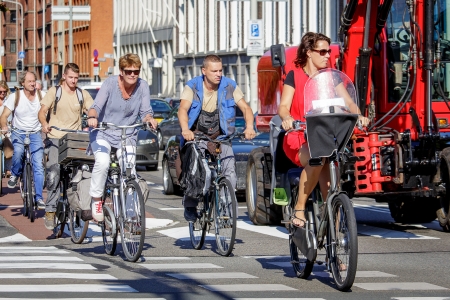Alcohol intake by cyclists is high, especially in (student) cities. In 2013, measurements were carried out in the cities of Groningen and The Hague on a Thursday and a Saturday between 5 pm and 8 am [32]. These showed that, in that period, an average of 62% of the cyclists had drunk alcohol and that for 42% of them their blood alcohol content (BAC) exceeded the legal limit of 0.5 g/l. After 1 am, these figures were 89% and 68% respectively. The average BAC was 0,79 g/l, but later at night the average BAC increased. As far as we know, no information is available on the prevalence of drug use or medication among cyclists.
Particularly youngsters seem to be involved in a road crash after alcohol intake. In a questionnaire survey among A&E-treated cyclists in the period from July 2020 to June 2021 [4] over 25% of the cyclists aged 18 to 24 reported having drunk alcohol before the crash. Among cyclists aged 12 to 17, this was 7%, and among the over-55s the percentage was between 3% and 5%. The problem of alcohol use among young cyclists appears to have grown in the past two decades: at the end of the last century, 20% to 25% of the young cyclists (aged 15 to 19) hospitalised in weekend nights after a crash without involvement of a motor vehicle had drunk alcohol; in 2010-2014 this percentage had increased to 45%-50% [33]. Additional information on the risk of cycling after alcohol intake is available in SWOV fact sheet Driving under the influence of alcohol.
